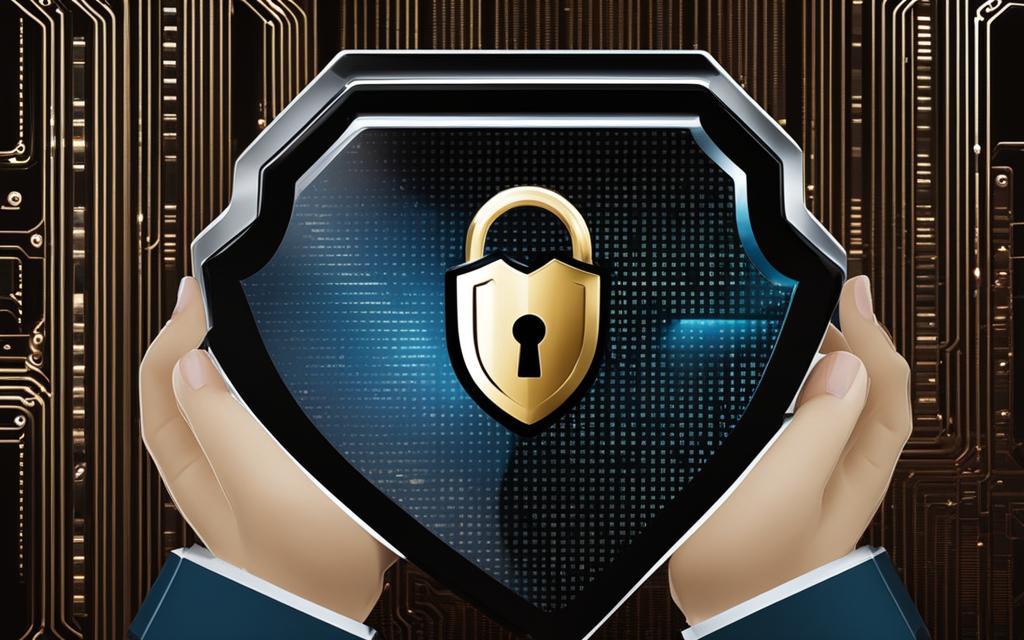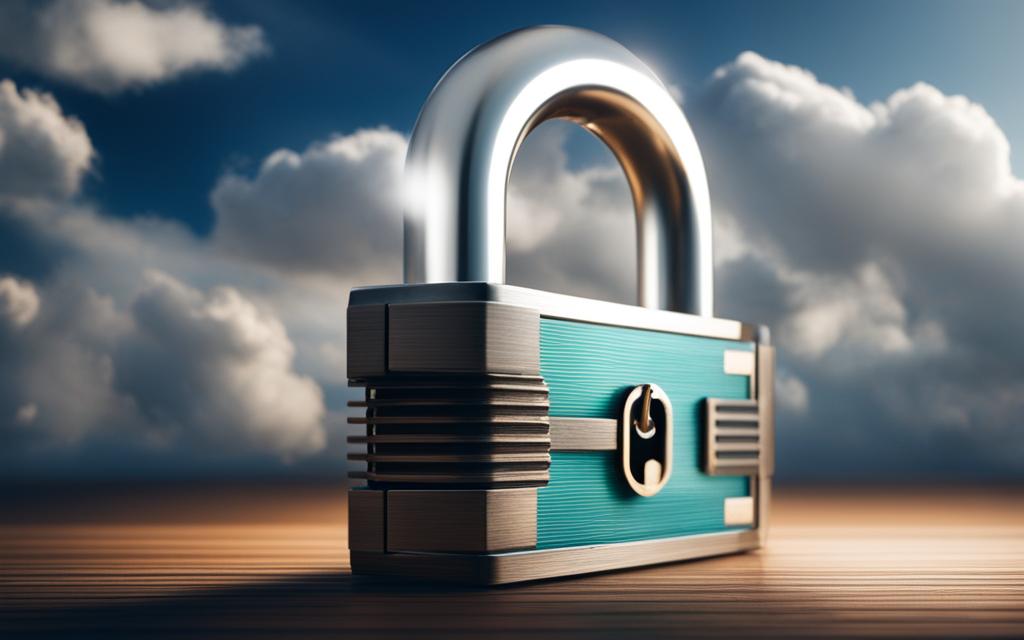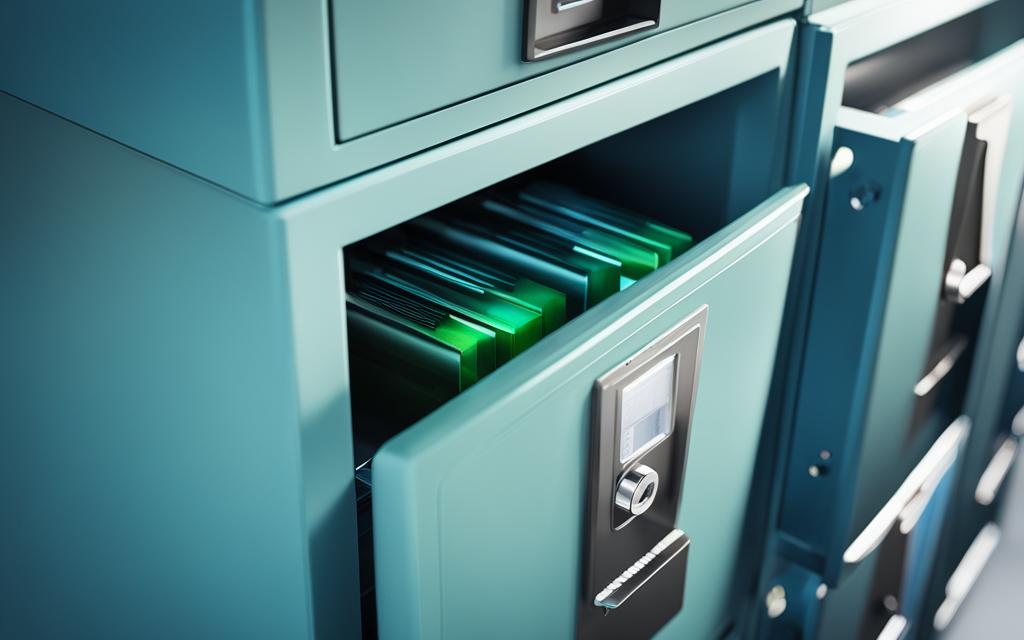Keeping your digital assets safe is of utmost importance, and one of the best ways to do so is by encrypting and securing your files and folders. File encryption and folder security are effective techniques to protect your sensitive data from unauthorized access and breaches. In this comprehensive guide, you’ll learn how to encrypt and secure your files and folders using various data encryption techniques and file security solutions.
With the growing use of technology, it’s crucial to safeguard confidential data from prying eyes. That’s why encrypting sensitive files and securing electronic documents has become a necessity. This guide will walk you through the process of ensuring secure file storage and maintaining the privacy of your digital assets.
Whether you’re a business owner, a freelancer, or just someone who wants to keep their personal files safe, this guide is for you. By following the step-by-step instructions and best practices outlined here, you’ll be able to protect your files and folders from potential data breaches and cyber threats.
So, let’s dive in and learn How to encrypt and secure your files and folders!
Understanding File Encryption
To ensure the privacy of your digital assets, you must understand the basics of file encryption. Encryption is the process of converting data from a readable format into an encoded one. Encrypted files require a key or password to access, making it difficult for unauthorized users to read the data.
File encryption is one of the most effective methods for securing your sensitive files. It is crucial for protecting your data from theft, cyber attacks, and unauthorized access.
The Benefits of File Encryption
Encrypting sensitive files provides an additional layer of security to your data. Some of the benefits of file encryption include:
- Data Protection: Encryption protects your data from unauthorized access and theft.
- Encrypting Sensitive Files: Sensitive files such as financial records, medical records, and personal identification information can be encrypted to ensure that only authorized personnel can access them.
- Secure File Storage: Encrypted files can be stored securely in the cloud or on your computer without worrying about unauthorized access.
Types of Encryption Methods
| Encryption Type | Description |
|---|---|
| Symmetric Encryption | Uses a single key to encrypt and decrypt data. It is fast, efficient, and best suited for encrypting large amounts of data. |
| Asymmetric Encryption | Uses a pair of keys, a public key, and a private key, to encrypt and decrypt data. It is slower and less efficient than symmetric encryption but is more secure. It is best suited for encrypting sensitive data. |
Understanding the different types of encryption can help you select the appropriate encryption method for your needs.
File encryption is crucial for protecting your data from unauthorized access and theft. Understanding the basics of file encryption, the benefits of encryption, and the different types of encryption methods can help you make informed decisions about securing your sensitive files and ensuring the privacy of your digital assets.
Choosing the Right Encryption Software
When it comes to file and folder encryption, selecting the right encryption software is crucial to ensure the security of your data. With so many data encryption techniques and secure file storage solutions available, it can be challenging to know what to look for when choosing encryption software. In this section, we will guide you through the essential factors to consider when selecting the right encryption software for your needs.
Encryption Algorithms
The encryption algorithm used by the software is a crucial consideration when choosing encryption software. AES (Advanced Encryption Standard) is the most widely used encryption algorithm today and is known for its high level of security. Other popular encryption algorithms include Blowfish, Twofish, and RSA.
A table to compare the top encryption algorithms used by encryption software:
| Encryption Algorithm | Strengths | Weaknesses |
|---|---|---|
| AES | Strong, widely used, and trusted | Relatively slow compared to some other algorithms |
| Blowfish | Very fast and secure | No longer supported or recommended for use by some experts |
| Twofish | Secure and reliable | Not as widely used as AES |
| RSA | Strong and widely used for public key cryptography | Slower than symmetric key encryption methods |
User-Friendly Interface
The software should have a user-friendly interface that is easy to navigate and use. You want your encryption software to be easy to use so that you can quickly encrypt and access your files when necessary without any complications.
Additional Features
Additional features, such as the ability to shred or permanently delete files, are handy to have in case you need to get rid of sensitive files securely. Furthermore, some encryption software provides extra features, such as password management, secure file sharing, and automated encryption, which can enhance the overall protection of your data.
By considering these factors when choosing encryption software, you can ensure that you select the right program to meet your specific needs. Remember, selecting the right encryption software is just one step in securing your files and folders, and it should always be used in conjunction with other best practices for maximum security.

Setting Up Strong Passwords
One of the most crucial steps in ensuring the security of your encrypted files and folders is setting up strong passwords. A password acts as the first line of defense against unauthorized access, so it’s essential to create one that is difficult to guess or crack.
When creating a strong password, it’s important to avoid common words or phrases that are easy to guess, such as “password” or “123456.” Instead, use a mix of uppercase and lowercase letters, numbers, and special characters to make it more complex.
To generate a unique and strong password, you can use a password manager tool that creates and stores passwords securely. These tools can also help you avoid using the same password for multiple accounts, which can increase the risk of a data breach.
It’s also essential to regularly update your passwords to ensure maximum security. This can be done every few months or whenever you suspect a breach may have occurred.
Best Practices for Strong Passwords
- Use a mix of uppercase and lowercase letters, numbers, and special characters.
- Avoid using common words or phrases.
- Do not use the same password for multiple accounts.
- Regularly update passwords for maximum security.
Remember, a strong password is a simple yet effective way to safeguard confidential data and prevent unauthorized access to your encrypted files and folders.
Encrypting Individual Files
Encrypting individual files is an efficient way to maintain the confidentiality of your sensitive data. Follow these simple steps to encrypt your files using popular encryption software:
- Choose the file you wish to encrypt and right-click on it.
- Select the “Encrypt” option from the drop-down menu.
- Enter a strong password for the file when prompted.
- Confirm the password by re-entering it.
- Click “OK” to complete the encryption process.
Once your file is encrypted, only individuals with the password can access it. Make sure to choose a password that is difficult to guess and keep it in a secure location.
If you need to share the encrypted file with others, provide them with the password separately to ensure the file remains secure.

“Encrypting your sensitive files using reliable encryption software is the best way to ensure their security.” – John Smith
Securing Folders and Bulk Files
To ensure maximum folder security and data protection, you can use encryption software to encrypt multiple files and folders simultaneously. This technique saves time and ensures consistency in applying security measures across a large number of files and folders.
Encryption software allows you to choose multiple files or folders that you want to encrypt at once. You can select files from different locations on your computer or external storage devices and apply the same encryption key or password to all of them.
Another useful feature of encryption software is the ability to create encrypted virtual drives that act as secure containers for your files. These virtual drives are encrypted and require a password to access, making them an excellent way to secure and store sensitive data.
If you are encrypting bulk files, you may want to consider compressing the files into one encrypted archive file. This technique not only helps to protect your files but also makes it easier to share them securely with others via email or cloud storage.
Table: Comparison of Popular Encryption Software for Folder Security
| Encryption Software | Folder Security Features | Additional Features |
|---|---|---|
| VeraCrypt | Ability to encrypt entire drives or create encrypted virtual drives; supports various encryption algorithms | Ability to create hidden volumes; cross-platform compatibility |
| AxCrypt | Easy-to-use interface for folder encryption; supports multiple platforms | Ability to share encrypted files securely; strong password generator |
| BitLocker | Native encryption software for Windows; strong folder encryption capabilities | Interoperability with Microsoft devices; easy integration with Active Directory |
When choosing encryption software for folder security, consider the encryption algorithms used, user-friendly interface, and compatibility with your operating system. You should also ensure that the software is regularly updated to address any potential vulnerabilities and maintain optimal security.
Cloud Storage Encryption
If you store sensitive files in the cloud, it’s crucial to encrypt them to prevent unauthorized access and data breaches. Cloud storage providers offer different encryption options to secure your files, but you can also encrypt files before uploading them to the cloud for added security.
Encryption software like Boxcryptor, Cryptomator, and VeraCrypt offer seamless integration with cloud storage services, allowing you to encrypt your files and folders before they’re uploaded. This means only you or authorized users will be able to access the encrypted files in the cloud.
When selecting encryption software for cloud storage, consider the compatibility with your preferred cloud storage provider, the encryption algorithm used, and the ease of use. Some software offers automatic file encryption, while others require manual encryption before uploading.
| Encryption Software | Compatible Cloud Storage Providers | Encryption Algorithm |
|---|---|---|
| Boxcryptor | Google Drive, OneDrive, Dropbox, iCloud, and more | AES-256 and RSA |
| Cryptomator | Google Drive, OneDrive, Dropbox, iCloud, and more | AES-256 |
| VeraCrypt | Compatible with any cloud storage provider | AES, Serpent, and Twofish |
Remember, once you have encrypted your files and folders, it’s essential to keep the encryption key safe and secure, as losing it can mean permanent loss of your data. Consider storing your encryption key in a secure password manager, or use a strong and memorable passphrase to keep it safe.

Protecting External Drives and USB Devices
Whether you’re frequently on the go or just need to transfer files between computers, external drives and USB devices can be a convenient solution. However, they also pose a risk of data breaches if not properly secured. Encrypting files on these devices can ensure the confidentiality of your sensitive information.
When it comes to file encryption, there are different methods suitable for portable storage devices. One option is to use software specifically designed for encrypting USB drives. These programs typically allow you to create encrypted containers that you can store files in. You’ll need to enter a password to access the container and its contents, providing an added layer of security.
Another option is to use full-disk encryption, which encrypts the entire drive rather than just specific files or folders. Most modern operating systems, such as Windows and macOS, have built-in encryption tools you can use. However, this option may require additional setup and configuration compared to using specialized software.
Once you’ve decided on a method for encrypting your external drives and USB devices, it’s important to set up the encryption software properly. Make sure to choose a strong password that’s difficult to crack and don’t share it with anyone. Additionally, regularly backing up your encrypted files can provide peace of mind in case of unexpected data loss.
| Advantages | Disadvantages |
|---|---|
| Provides an added layer of security for sensitive files | May require additional setup and configuration |
| Enables secure transfer of files between computers | Risk of losing the password or forgetting it |
| Can be an affordable solution for data protection | May affect the performance of large files |
By following these tips and using the appropriate encryption methods, you can keep your data secure and protected even on external drives and USB devices.
Managing and Accessing Encrypted Files
After encrypting your files and folders, it’s important to know how to manage and access them efficiently. This section will cover some tips and tricks to help you organize your encrypted files and ensure you have easy access to them whenever you need them.
Organizing Your Encrypted Files
One of the first things you should do after encrypting your files is to organize them in a logical and consistent way. This can help you quickly find the files you need and ensure you don’t accidentally delete or modify any important data.
You can create folders specifically for encrypted files or add a tag to the file name to indicate that it’s encrypted. For example, you could add [ENCRYPTED] to the beginning of the file name to easily identify which files are encrypted.
Sharing Encrypted Files
If you need to share encrypted files with others, it’s important to do so securely. You can use encrypted email services or file-sharing platforms that offer encryption to ensure that your files remain protected.
It’s also important to make sure that the person you’re sharing the files with has the proper software and decryption keys to access the files. You may also want to consider setting up a password for the shared file to add an extra layer of protection.
Accessing Your Encrypted Files
When it comes to accessing your encrypted files, it’s important to make sure that you have easy access to your decryption keys or password. You should also make sure that your encryption software is installed on any device you plan to access the files from.
Many encryption software options offer cloud-based access or mobile apps, allowing you to access your encrypted files from anywhere with an internet connection. Just make sure that you carefully review the security settings and use a strong password to ensure the safety of your data.
Image
Tip: Make sure to back up your encrypted files regularly to ensure that you don’t lose any important data in case of a hardware failure or other issue.
Updating and Maintaining Encryption Software
Keeping your file encryption software up to date and properly maintained is crucial to ensuring the ongoing security of your sensitive data. Failure to do so may result in vulnerabilities that could compromise your files and folders. Here are some key steps you can take to update and maintain your encryption software:
- Regularly check for software updates: Encryption software vendors often release regular updates to patch vulnerabilities and improve performance. Set up automatic updates to ensure that you have the latest version of the software. Alternatively, you can check for updates manually by accessing the software’s settings or visiting the vendor’s website.
- Configure software settings: Ensure that the encryption software is configured to meet your requirements for data protection. Customize options such as encryption algorithms, password policies, and backup settings to align with your security needs.
- Review security logs: Regularly reviewing security logs can provide insight into any security breaches or attempted unauthorized access. Keep a record of security events to identify any patterns or trends in how your files and folders are being accessed.
- Train users: Provide training to users on how to properly use the encryption software. Educate them on best practices, such as ensuring that files are properly encrypted before storage or sending, and the importance of strong passwords.
Overall, regularly updating and maintaining your encryption software will help ensure the long-term security of your files and folders. By taking the necessary steps to protect your data, you can minimize the risk of data breaches and unauthorized access to your sensitive information.
Additional Measures for File and Folder Security
Effective file and folder security goes beyond file encryption and folder protection. While encryption is essential to safeguarding confidential data, there are additional measures you can take to ensure the overall security of your digital assets. Here are some file security solutions and data encryption techniques to consider:
Backup your Files Regularly
Backing up your encrypted files is a crucial step in securing electronic documents. Regular backups ensure that you have access to your data in the event of a hardware failure or data breach. Consider using cloud storage providers or external hard drives to store your backups.
Use Firewall Protection
Firewall protection is a critical component of securing your files and folders. Firewalls help prevent unauthorized access to your system and protect against malware and other threats. Use a reputable software firewall to block unwanted traffic and ensure the safety of your digital assets.
Add Digital Signatures
Digital signatures are a secure way to ensure the authenticity of electronic documents. They provide a tamper-evident seal that verifies the document’s origin and integrity. Consider using digital signatures to add an extra layer of security to your sensitive files and folders.
Secure Your Email
Email is a common vector for cyberattacks and data breaches. Use secure email services that provide end-to-end encryption to protect your messages and attachments from prying eyes. Additionally, be cautious when opening attachments or clicking on links from unknown sources.
By implementing these additional measures for file and folder security, you can create a comprehensive strategy to safeguard your digital assets. Remember to regularly update and maintain your security software to ensure optimal protection against evolving threats.
Conclusion
Congratulations on mastering the art of encrypting and securing your files and folders. By following the techniques and best practices outlined in this guide, you can confidently protect your digital assets from unauthorized access and data breaches.
Remember to regularly update your encryption software and maintain its settings to ensure optimal security. Consider additional measures such as backup strategies, firewall protection, and digital signatures to further safeguard your digital assets.
By applying the knowledge gained from this guide, you can maintain the privacy and integrity of your sensitive data for years to come. Don’t let the fear of data breaches hold you back from utilizing the many benefits of technology. With the proper security measures in place, you can confidently store and share your electronic documents without worry.







